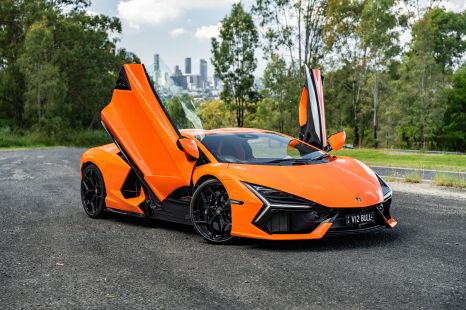

Alborz Fallah
3 Days Ago
We take the all-electric Q4 Sportback e-tron for a spin in Germany ahead of an anticipated Australian release in the coming years.
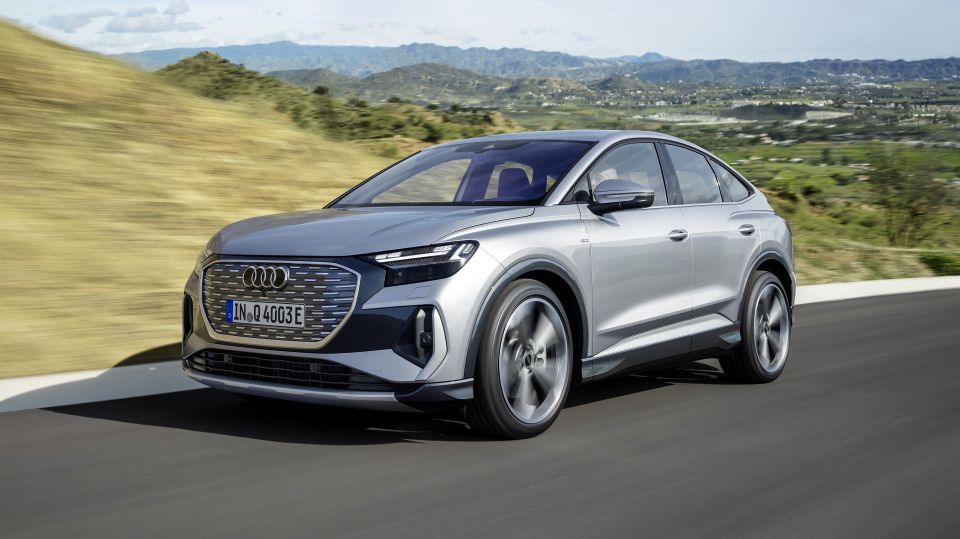
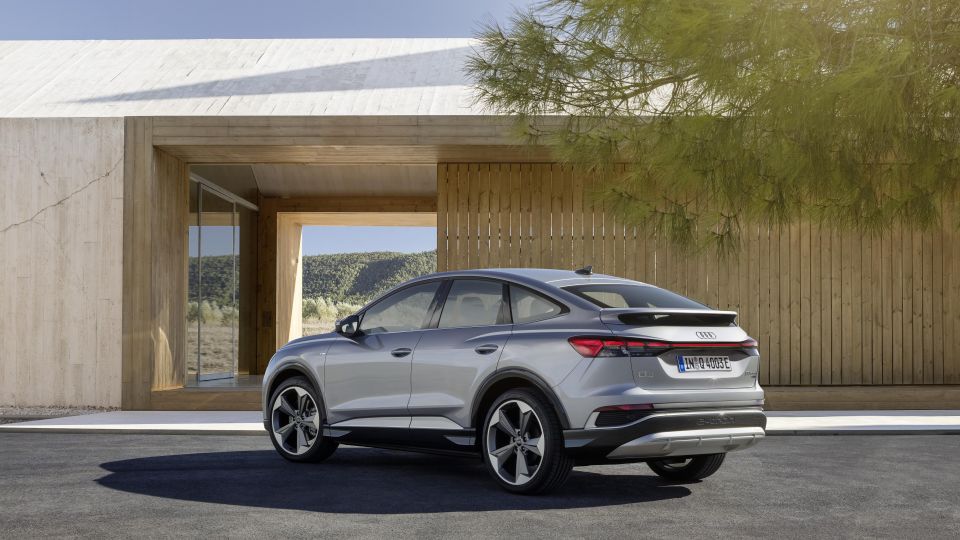

Take advantage of Australia's BIGGEST new car website to find a great deal on a Audi Q4 e-tron.
At first glance, the Audi Q4 Sportback e-tron is a car with an identity crisis.
It’s an electric vehicle styled as if it has an internal-combustion engine. It’s an SUV that’s trying to be a sporty coupe. It’s as if Audi is trying to be edgy, and play it safe, all at the same time.
The Sportback, as the name implies, has more steeply raked rear pillars than the less expensive, more practical, hatchback-style Q4 e-tron with which it shares showroom space in Europe.
But it’s otherwise identical in terms of its powertrain specification, and trim levels.

From the outside the Audi Q4 Sportback e-tron looks reassuringly Audi in its design and execution, from the crisp creases on the bodywork to the bold ‘grille’ up front.
Peel back the skin, however, and you’ll find hardware identical to that used in the Volkswagen ID.4 and Skoda Enyaq iV electric SUVs, among others. That’s because the Q4 Sportback e-tron is built on the same Volkswagen Group MEB electric vehicle architecture.
There’s nothing wrong with that, in theory. Platform sharing – building different cars using a bunch of the same parts to cut costs – is a smart business strategy, and the Volkswagen Group is a master of the practice.
Even today, few non-enthusiasts are aware that a VW Golf, Audi A3 and Skoda Octavia are fundamentally the same car underneath. But can the trick work in EVs with identically smooth and silent powertrains that perform the same?
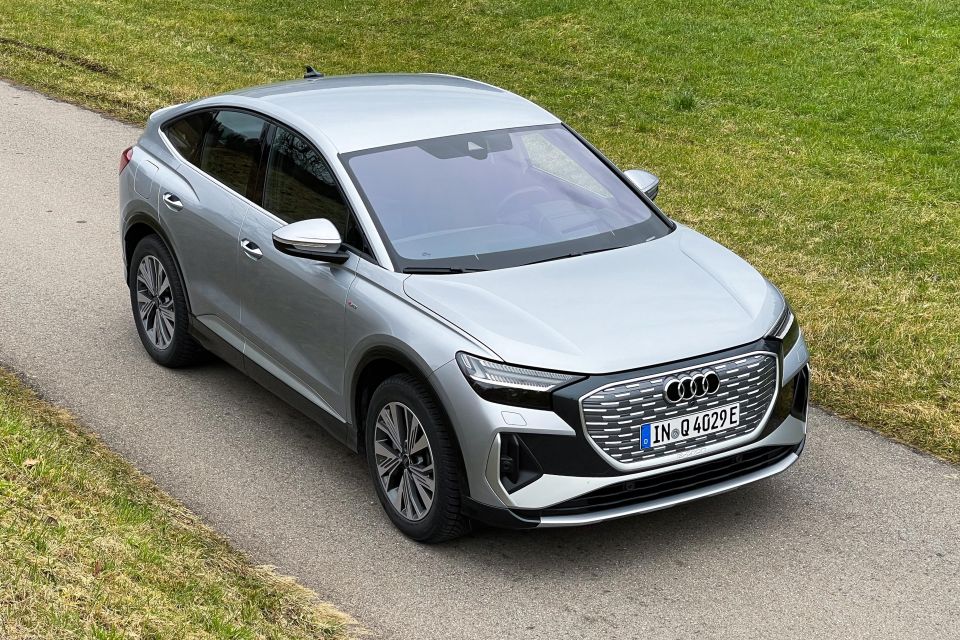
Given it’s not yet confirmed for the Australian market, there’s no locally relevant pricing and specifications.
Looking overseas to the UK market, the Q4 Sportback e-tron starts at £45,475 ($79,031) for the entry-level Sport 35 e-tron grade, climbing to £62,290 ($108,254) for the flagship Edition 1 50 e-tron quattro. The Sportback body style carries a circa £1500 ($2606) premium over the equivalent Q4 e-tron SUV.
The Audi Q4 Sportback e-tron starts a couple grand GBP over a top-spec Q3 Sportback, with other examples around the £45,000 bracket including a well-specified VW Golf R or Audi S3 Sportback.
While direct conversions from the UK market aren’t necessarily indicative of Australian pricing, it’s a rough guide when you factor in positioning of other vehicles sold here.
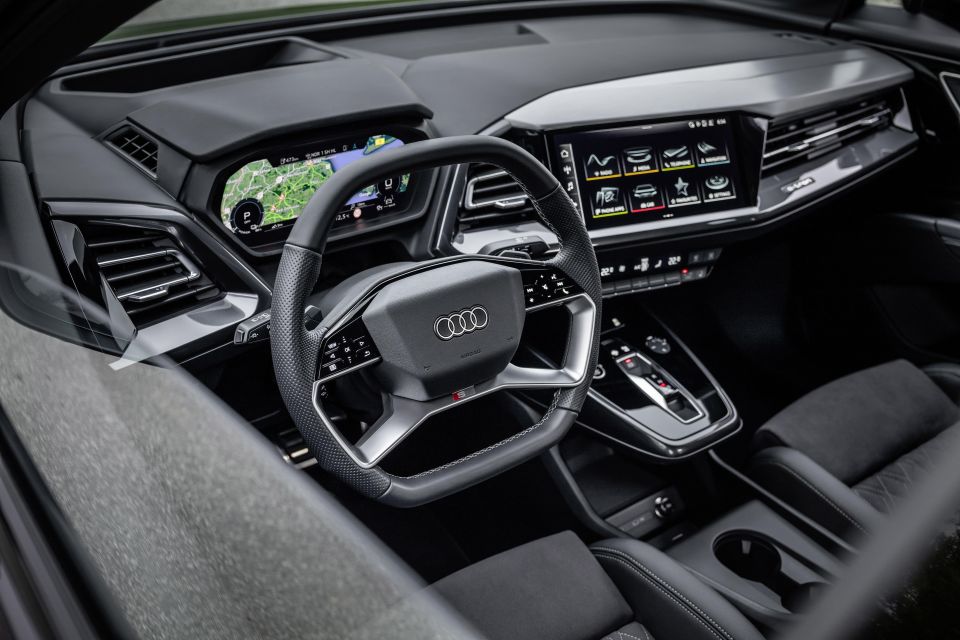
As with the exterior, the interior of the Q4 Sportback e-tron is familiar Audi fare.
Strong geometric forms and splashes of brightwork abound, though form has perhaps trumped function in the shape of a steering wheel that’s flat at the top and bottom and feels odd to use when you’re winding from lock to lock.
The instrument panel features Audi’s excellent configurable virtual cockpit display, and a touchscreen at the centre of the dash, and angled towards the driver, controls the infotainment system.
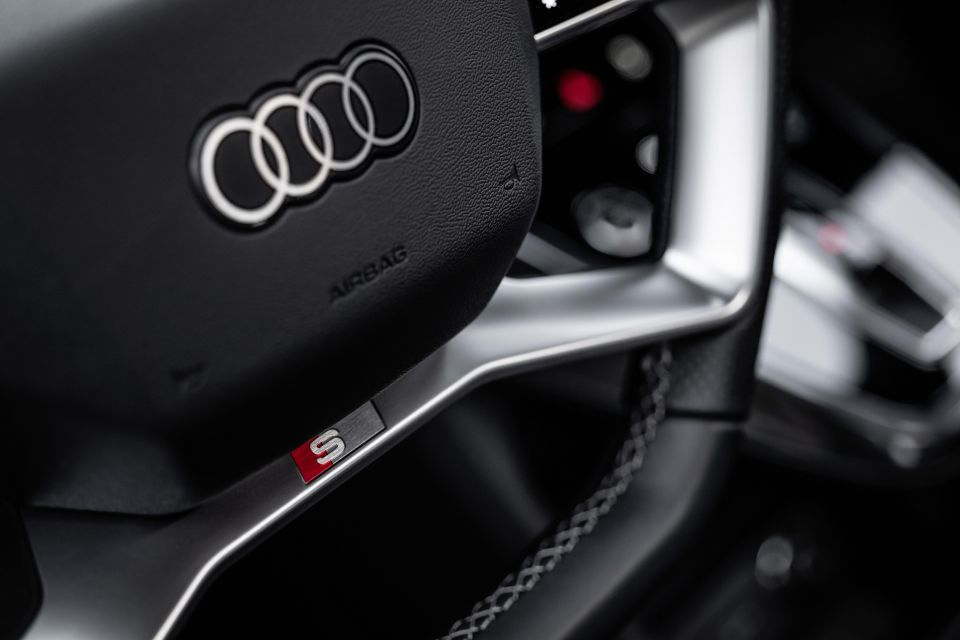
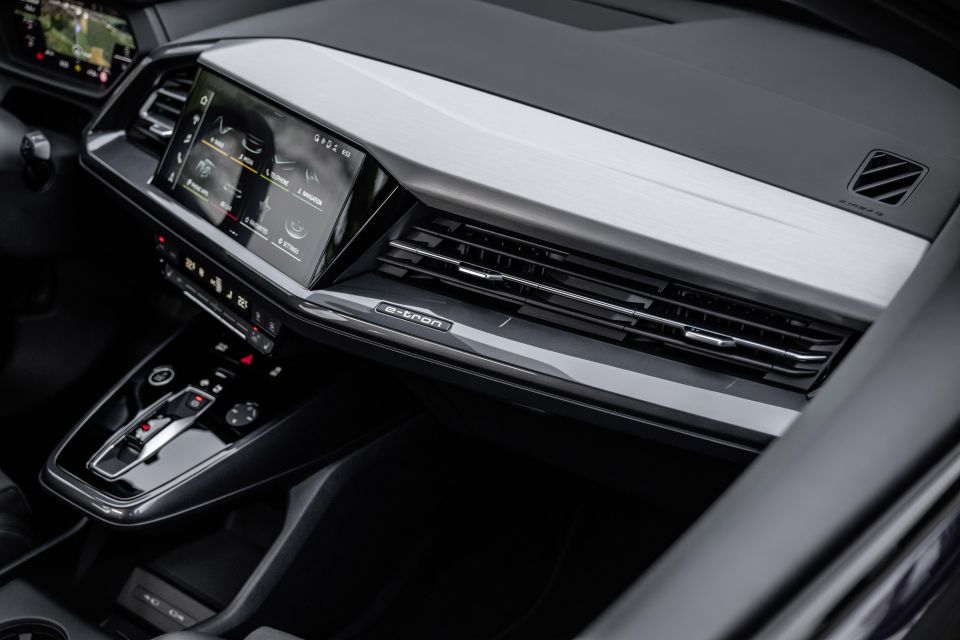
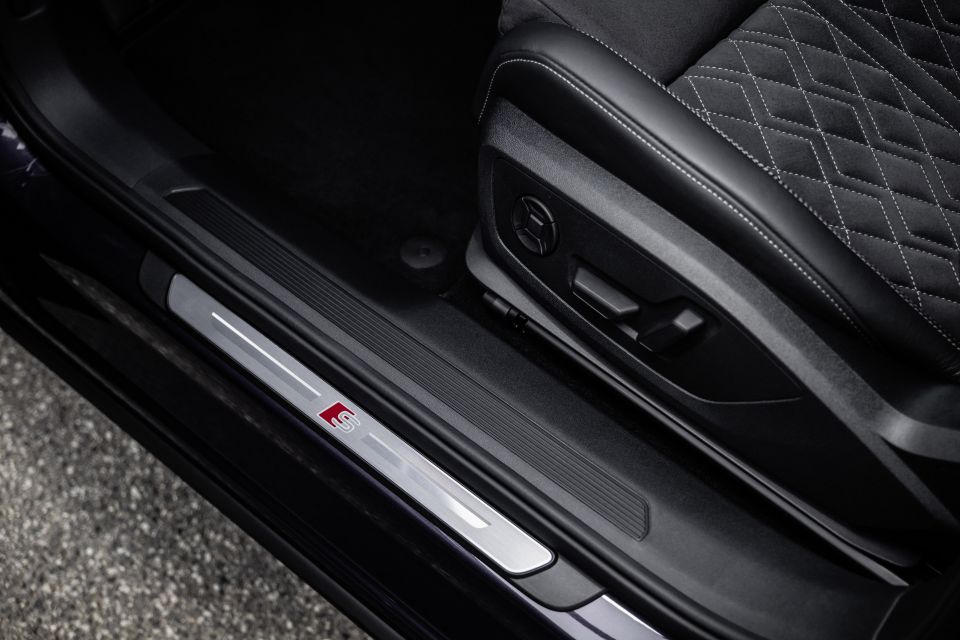
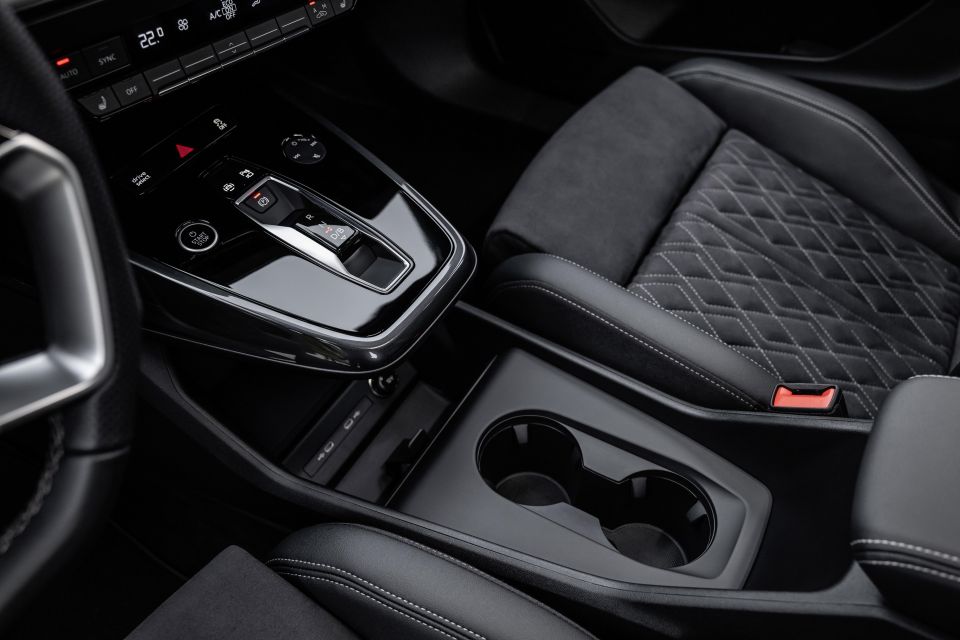
Thankfully, not everything is controlled via the touchscreen. The heating, cooling and ventilation controls are physical buttons arranged under the touchscreen much like the new A3 and Q3, that are easy to find and use without looking.
Ancillary controls such as the start-stop button, the Audi drive mode select button and the drive, neutral and reverse controls are located on a small panel cantilevered out from under the dash, and within easy reach of the driver.
Underneath it is a centre console with cubbies, cupholders, USB ports and a centre armrest.
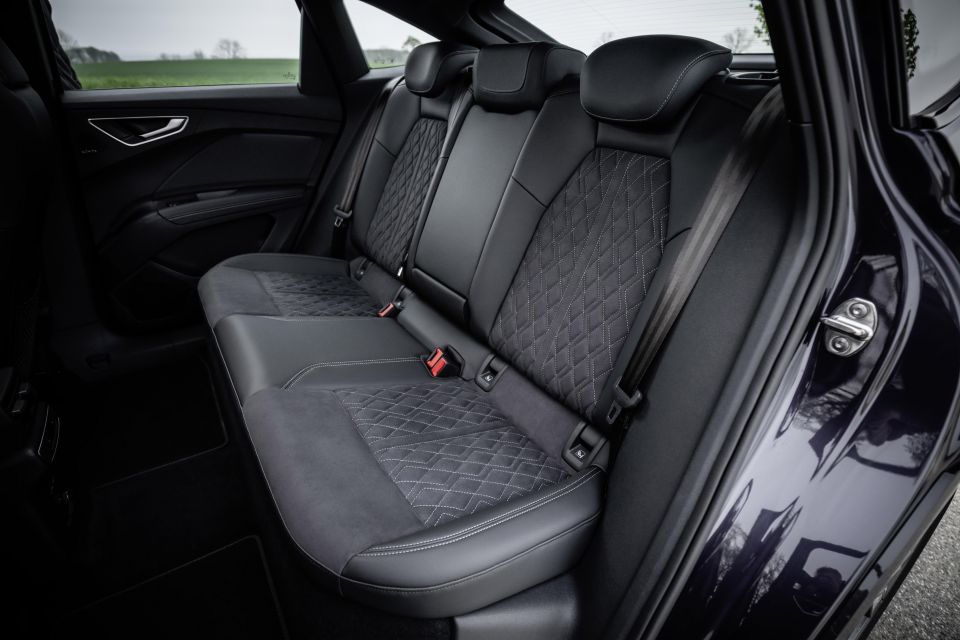
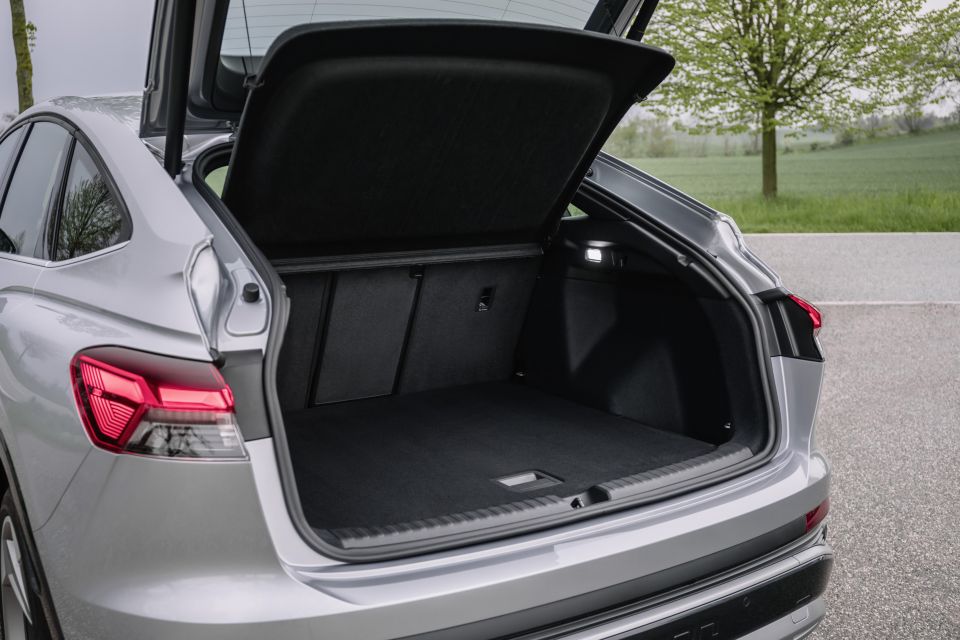
Audi can make modest plastics look expensive. The grained stuff in the Q4 Sportback e-tron looks almost like leather, the shiny stuff looks like metal, and even the piano black looks like it belongs on a piano.
But the interiors of both the Hyundai Ioniq 5 and Kia EV6 give this Audi a run for its money in terms of perceived quality.
This is not a knock against Audi. Rather, it’s an indication of how good the Koreans have become at this stuff.
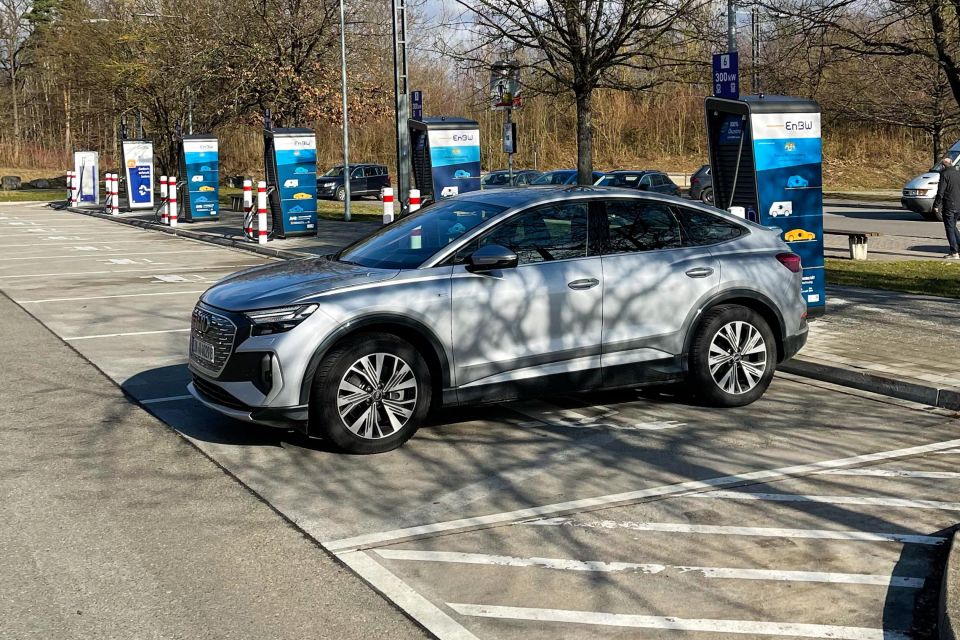
As with most EVs, the stuff that makes the Audi Q4 Sportback e-tron go is all hidden well out of sight.
Our German-specification, top-of-the-range Prestige 50 e-tron quattro model boasted dual motors producing a total of 220kW and 460N, fed by an 82kWh battery with a usable 76.6kWh of storage.
The Q4 Sportback e-tron is also available in two rear-drive versions. The base 35 e-tron has a 125kW/310Nm e-motor and 55kWh battery, while the 40 e-tron is powered by an e-motor that has the same torque (310Nm) but produces 150kW and is fed by the bigger 76.6kWh battery used in the dual-motor model.

Despite being the heaviest of the three, the 2140kg dual-motor 50 e-tron quattro is the quickest, with a claimed 0-100km/h time of 6.2 seconds, versus 9.0 seconds for the 1895kg 125kW model (35 e-tron) and 8.5 seconds for the 2054kg 150kW 40 e-tron.
Audi claims the Q4 Sportback 50 e-tron quattro has a range between 418km to 498km on the WLTP combined cycle, while the 125kW 35 e-tron with the smaller battery offers 317km to 349km depending on specification.
The distance king of the lineup is the 150kW single-motor e-tron 40 with the long-range battery, which Audi claims will cover 452km to 528km on the WLTP combined cycle.
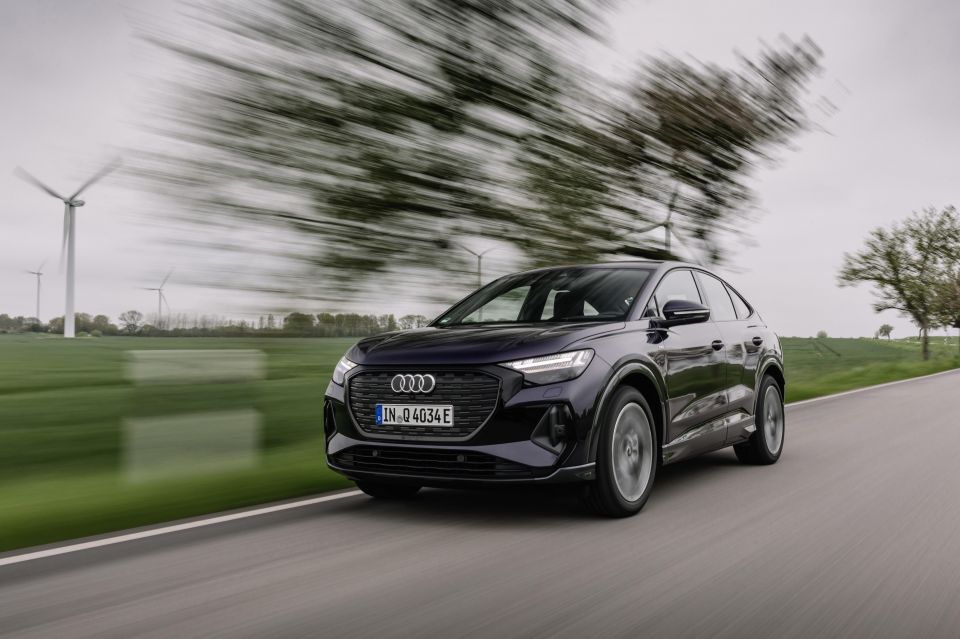
In the default Auto drive mode, the Q4 Sportback e-tron does a lot of the thinking for the driver.
On our test drive in Germany, it anticipated speed restrictions and junctions, automatically increasing the level of regenerative braking as it approached them while prompting you to lift off the accelerator to reduce speed and improve efficiency.
If you enjoy driving, though, you’ll want to disable the lane-keep assist to kill the annoyingly aggressive reactions through the steering wheel.
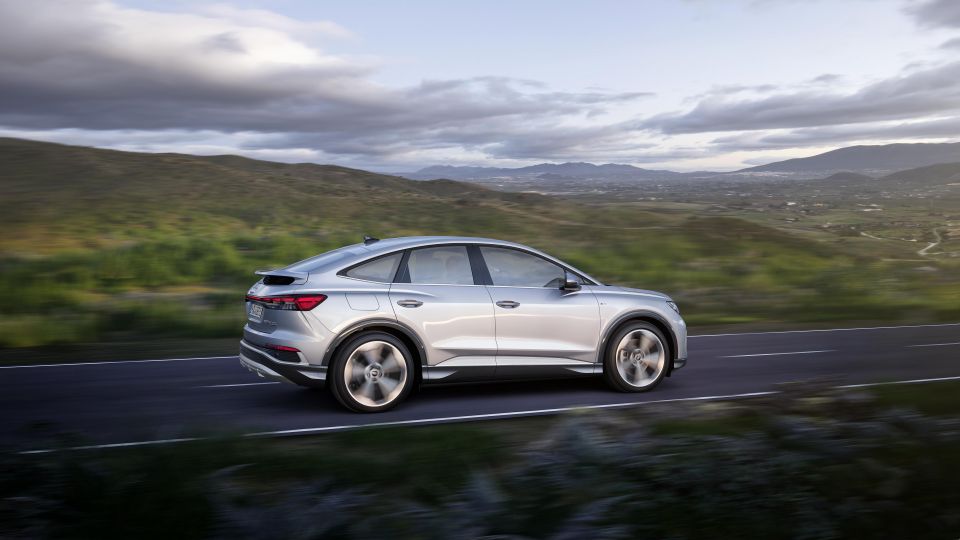
You’ll also want to play with the three levels of lift-off regenerative braking – low, medium, and high – or let the Q4 Sportback e-tron simply coast when you lift off the accelerator.
The levels are toggled via the paddles on the steering wheel, though, confusingly, the plus paddle means less regen, while the minus paddle gives you more.
And you’ll want to select Dynamic mode. This doesn’t just make the Audi feel slightly sharper and more responsive, it puts the driver in charge, reducing the interventions from the electronic nannies.
What Dynamic mode also reveals, however, is that despite its relatively stiff suspension the Q4 Sportback e-tron isn’t that dynamic to drive, especially on a winding road.
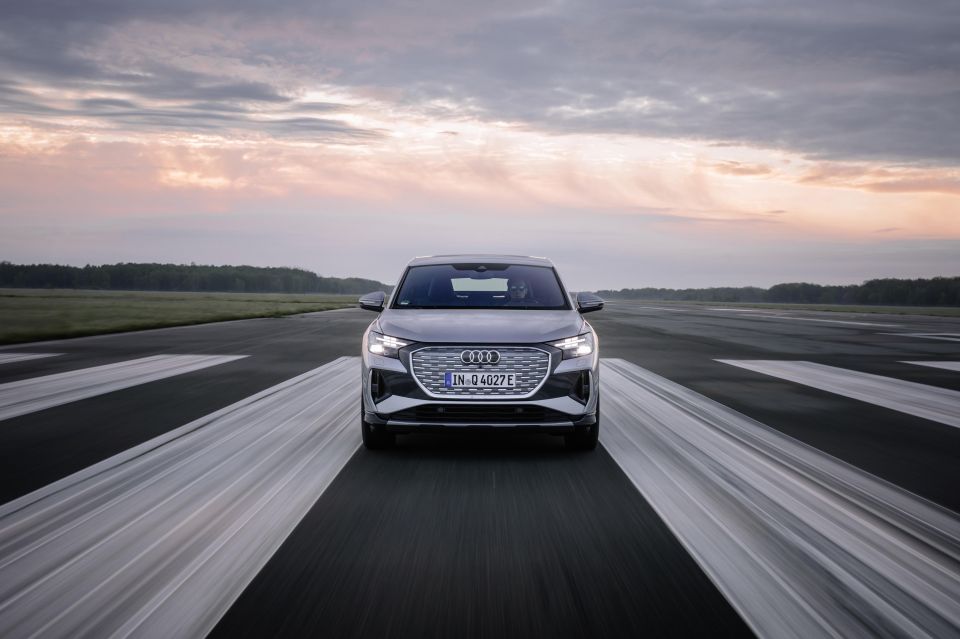
Slow in, fast out; fast in, slow out – it doesn’t matter what you try, the Q4 Sportback e-tron’s handling remains stubbornly one-dimensional.
There’s plenty of grip, and decent acceleration, but little adjustability in the chassis. The steering doesn’t give a ton of feedback, and it doesn’t punch out of corners like some other electric SUVs.
The dual-motor Kia EV6 is much more fun.
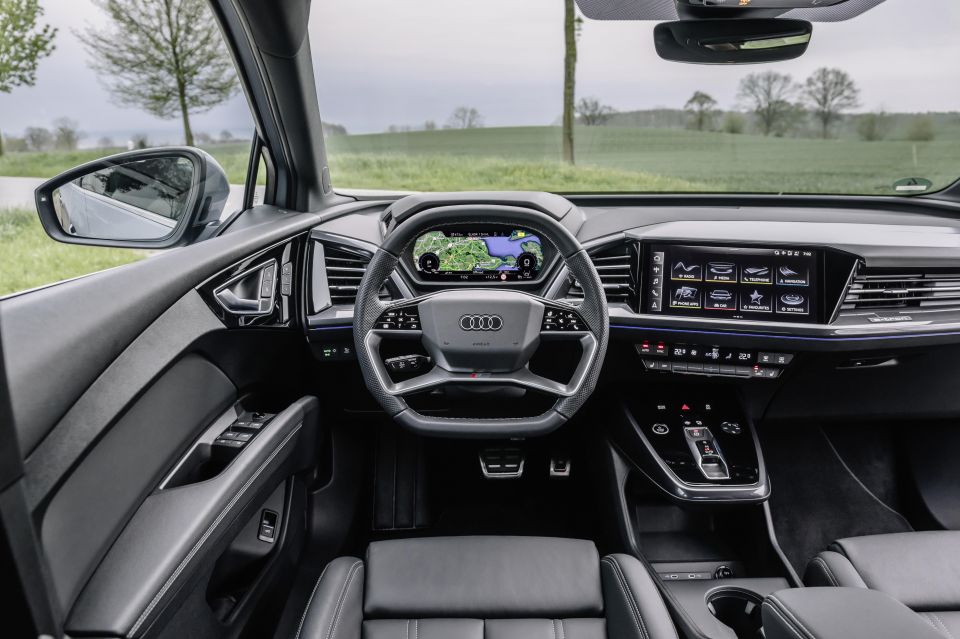
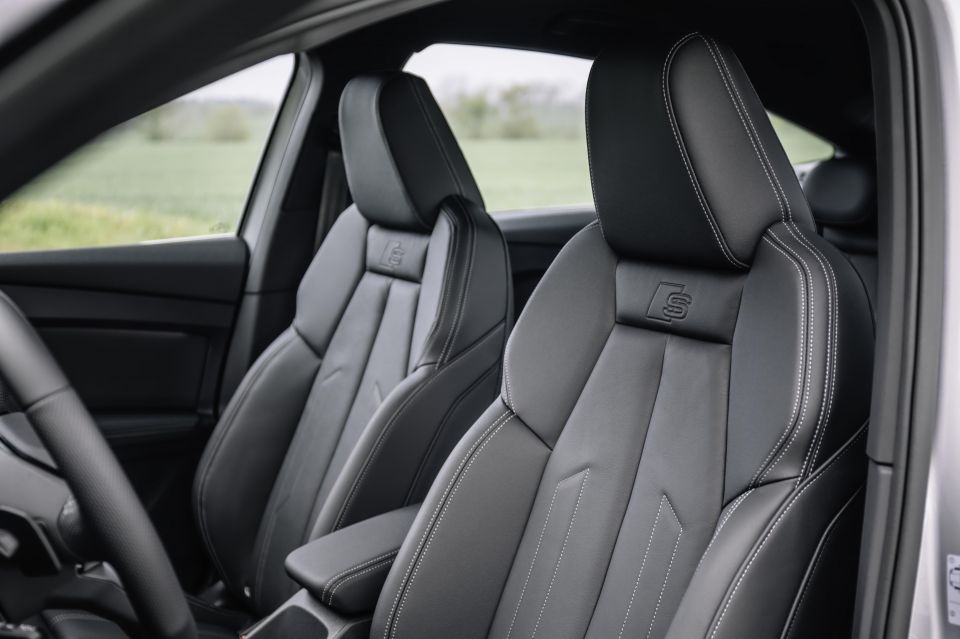
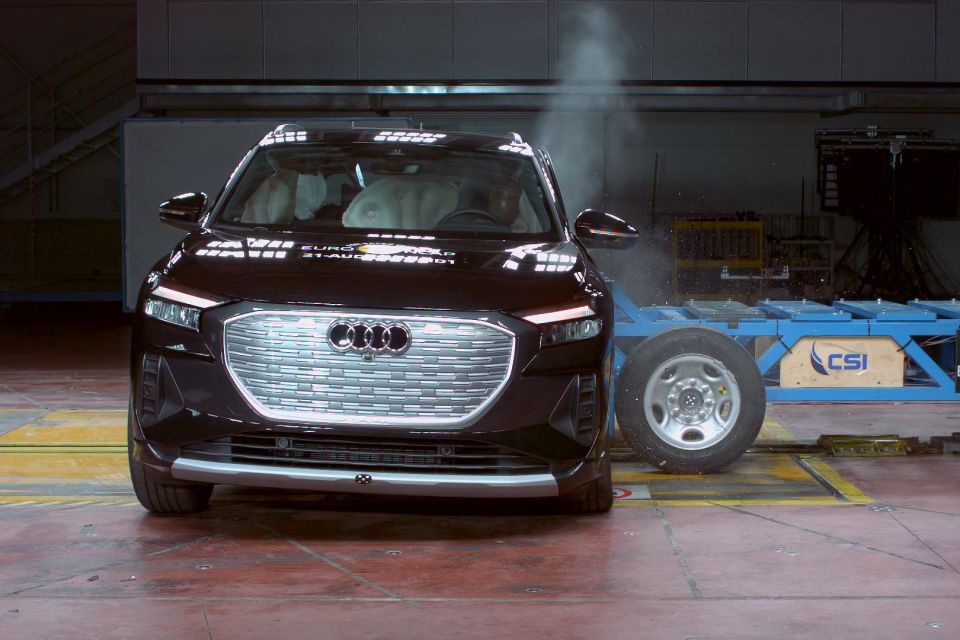
While unrated by ANCAP, the Q4 e-tron and Q4 Sportback e-tron wear a five-star Euro NCAP safety rating.
Category scores included 93 per cent for adult occupant protection, 89 per cent for child occupant protection, 66 per cent for vulnerable road users and 80 per cent for safety assist.
Standard safety features in the UK include:

Find out more about the car
Audi Australia covers its range with a five-year, unlimited-kilometre warranty.
The larger Audi e-tron and e-tron Sportback also get six years of complimentary scheduled servicing, as well as a six-year unlimited subscription to the Chargefox public fast-charging network.
Should the Q4 e-tron range be made available in Australia, we’d expect the German marque to offer a similar ownership benefits program to its existing all-electric e-tron range.
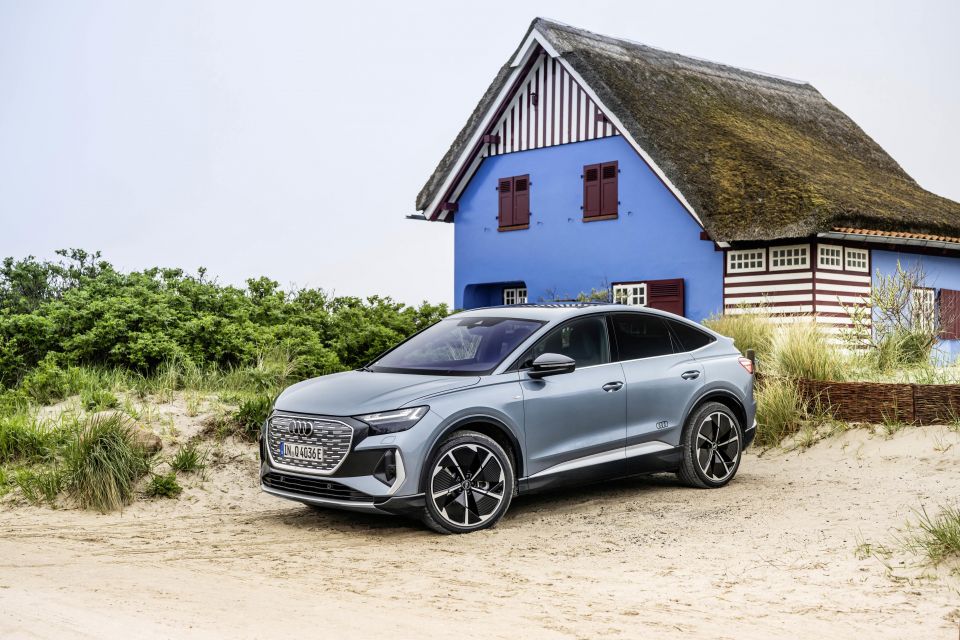
This handsome, well-finished, well-equipped Audi EV proves the benefits of platform sharing, but it also reveals a downside.
Volkswagen Group’s MEB-based vehicles aren’t particularly inspiring to drive, and that includes the Q4 Sportback e-tron. It’s competent, but it doesn’t sparkle.
Then there’s this – the MEB-based Skoda Enyaq iV and Enyaq iV Coupe are also bound for Australia, and both should retail for significantly less than the $78,000 or more that, if overseas pricing is a guide, Audi is likely to charge for a base Q4 e-tron or Q4 Sportback e-tron.
We’ll confirm once we can drive the two cars back-to-back, but on paper, at least, if you want an electric SUV with much the same technology, performance, and range as an Audi Q4 e-tron, the Skoda looks like it could be the smarter buy.

Click the images for the full gallery
Take advantage of Australia's BIGGEST new car website to find a great deal on a Audi Q4 e-tron.


Alborz Fallah
3 Days Ago


William Stopford
3 Days Ago


James Wong
2 Days Ago


Damion Smy
1 Day Ago
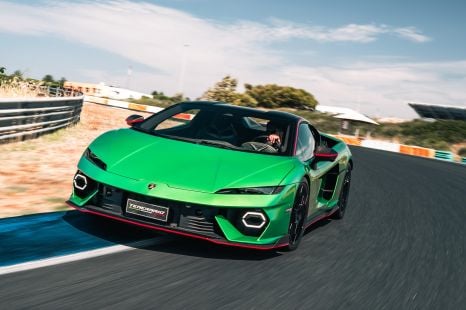

Alborz Fallah
1 Day Ago


Max Davies
1 Day Ago